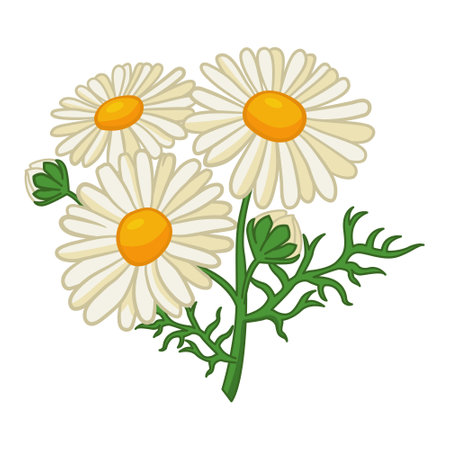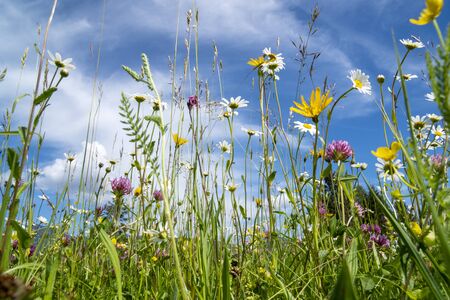Introduction to British Wildflower Meadows
There’s something undeniably magical about a British wildflower meadow, those vibrant tapestries of colour that have dotted our countryside for centuries. These meadows are not just picturesque; they are living testaments to Britain’s natural and cultural heritage. Traditionally managed by generations of farmers and land stewards, wildflower meadows once covered vast swathes of the UK, providing hay for livestock and a haven for wildlife. Over time, their presence has dwindled, making the preservation and maintenance of these landscapes more crucial than ever.
What sets a British wildflower meadow apart is its extraordinary diversity—both in flora and fauna. Unlike intensively farmed fields, these meadows brim with native grasses and flowers such as oxeye daisies, knapweed, and yellow rattle, all growing in harmony. This patchwork of species supports an abundance of pollinators like bees and butterflies, as well as birds and small mammals. Culturally, wildflower meadows evoke memories of long summer days, traditional haymaking, and community gatherings. They are woven into our literature, art, and collective memory.
Maintaining a wildflower meadow is both an art and a science—a year-round commitment that calls for patience, observation, and gentle stewardship. With careful monthly attention, anyone can help these precious habitats thrive for future generations to enjoy.
Preparing Your Meadow: Winter and Early Spring
As the chill of winter lingers across the British landscape, your wildflower meadow may seem dormant, but this is a crucial time for preparation. Seasoned gardeners know that what you do now sets the stage for vibrant blooms later in the year. Here are some practical tips and traditional wisdom to help you prepare your meadow during these colder months.
Winter Clearing: Less Is More
Resist the urge to tidy everything away. In Britain, overwintering wildlife such as hedgehogs, toads, and various insects rely on long grass, seed heads, and leaf litter for shelter. However, it’s wise to clear away any invasive weeds or encroaching brambles before they take hold in spring. Use gentle hand tools rather than machinery to avoid disturbing hibernating creatures.
Scarifying for New Growth
Scarifying – gently raking or scratching the soil surface – is best done in late winter or early spring when the ground isn’t frozen. This traditional method helps to break up thatch and moss, allowing light and air to reach dormant seeds while creating gaps for self-seeding wildflowers to establish. Take care not to overdo it; a light touch is key.
Seasonal Preparation Checklist
| Task | Timing | Tips |
|---|---|---|
| Clearing fallen debris | December – February | Avoid clearing all; leave some piles for wildlife refuge. |
| Scarifying (light raking) | February – March | Choose a dry day; focus on areas with dense thatch or moss. |
| Removing invasive species | Anytime ground is soft enough | Pull by hand to minimise disturbance. |
| Supporting wildlife habitats | Throughout winter | Create log piles and leave hollow stems standing where possible. |
A Long-Term Perspective
The British approach values patience and stewardship—your efforts now may not yield instant results, but they will encourage a healthier ecosystem come spring. Remember, a true wildflower meadow is a partnership between nature and the gardener, shaped by subtle seasonal interventions rather than drastic changes.

3. Spring Awakening: Sowing, Weeding, and Early Bloom
As the days lengthen and the British countryside shakes off winter’s chill, your wildflower meadow stirs to life—a true testament to patience and nature’s rhythm. Spring is a critical time for sowing new seeds, nurturing emerging seedlings, and giving your meadow the best chance to thrive throughout the year.
Sowing British Wildflower Seeds
The ideal window for sowing wildflower seeds in Britain falls between March and May. Choose a calm, dry day to scatter your seeds; this helps them settle into the soil rather than blowing away on a gusty breeze. Gently rake the soil beforehand to create a fine tilth, making sure it’s free from large clumps or debris. Remember, less is more—over-seeding can lead to overcrowding, so aim for an even, thin distribution. After sowing, lightly press the seeds into the soil with the back of a rake or simply walk over them with flat shoes—no need to bury them deep as most wildflowers prefer light for germination.
Identifying Native Seedlings
In early spring, distinguishing wildflower seedlings from unwanted weeds takes a keen eye and a bit of patience. Native species such as oxeye daisy, red campion, and yellow rattle begin to show their first leaves—usually softer, rounder or more intricately shaped than typical grass or dock leaves. If you’re unsure, consult a reliable field guide or local gardening group; learning to recognise these baby plants is part of the pleasure and will ensure you nurture true native diversity instead of letting brambles or nettles take over.
The Importance of Selective Weeding
Resist the urge for wholesale weeding—instead, practise selective weeding by gently removing aggressive species that threaten your wildflowers’ space and sunlight. Focus on invasive grasses, docks or thistles which can quickly outcompete more delicate natives. Pull these intruders by hand where possible, as this minimises soil disturbance and avoids damaging precious seedlings nearby. This approach might seem painstaking at first but pays dividends later in the season when native blooms dominate rather than being swamped by coarse weeds.
Top Tip from Experience
Don’t be too quick to tidy up every stray leaf—many British wildflowers look unassuming in their earliest stages. Give them time to establish before making any drastic decisions. Remember: a little patience now will reward you with a vibrant display come summer.
4. Summer Flourish: Managing Blooms and Pollinators
As British summer unfolds, your wildflower meadow reaches its most dazzling display. The air hums with the industrious activity of bees and butterflies, while vibrant blooms sway gently in the warm breeze. This is the season when careful stewardship ensures your meadow’s continued health and supports our precious pollinators.
Encouraging Midsummer Growth
Midsummer calls for a gentle touch. Resist the temptation to mow or cut back flowering stems too soon, as this is when wildflowers like oxeye daisy, knapweed, and red clover are at their peak. Allowing these blooms to mature encourages robust seed production and maintains diversity year after year. If you notice any areas where grasses threaten to overwhelm the flowers, selectively hand-pulling grass can help tip the balance back in favour of your wildflowers.
Supporting Bees and Butterflies
British meadows are crucial havens for pollinators. To support them during summer:
- Avoid using pesticides or herbicides—even those labelled as ‘wildlife-friendly’ can harm bees and butterflies.
- Leave some taller patches uncut, especially along field margins or less-trodden corners, creating safe havens for caterpillars and resting spots for adult insects.
- Provide shallow water sources, like a sunken bowl or small pond, so pollinators can drink safely on hot days.
Popular British Wildflowers and Their Pollinators
| Wildflower | Main Pollinator Visitors | Peak Bloom |
|---|---|---|
| Meadow Buttercup | Bumblebees, Hoverflies | May–July |
| Knapweed | Bees, Butterflies (Skippers & Blues) | June–August |
| Red Clover | Bumblebees, Honeybees | June–September |
| Oxeye Daisy | Beetles, Moths, Bees | June–July |
| Bird’s-foot Trefoil | Bumblebees, Small Blue Butterflies | May–August |
The Traditional Hay Cut: Timing Matters
The classic British approach is to mimic traditional haymaking by leaving the meadow untouched until late July or August. This gives wildflowers ample time to set seed—a rhythm that echoes centuries of countryside wisdom. Cutting too early risks halting the life cycle of many species; too late and you may miss out on autumn regrowth. Once most blooms have faded and seeds have dropped, undertake your main ‘hay cut’: mow high (about 5cm) and remove all cuttings to prevent mulching and nutrient build-up.
A Month-by-Month Hay Cut Timeline
| Month | Mowing/Management Action |
|---|---|
| June–Early July | No mowing; allow flowers to bloom fully. |
| Late July–August | Main ‘hay cut’ after seeds drop. Remove all arisings. |
| September Onwards | Sporadic spot cutting for tidy-up if needed. |
This careful management not only preserves a quintessential slice of British heritage but also ensures your wildflower meadow remains a flourishing sanctuary for wildlife throughout the bustling summer months.
5. Autumn Care: Seed Collecting and Meadow Renewal
As the British summer fades into a gentle autumn, your wildflower meadow enters a crucial phase for next year’s success. This is the season to turn your attention to seed collecting, encouraging natural self-seeding, and patch renewal—all in harmony with our distinctive British climate.
How to Collect Seeds from Mature Plants
Come September and October, many wildflowers will have finished flowering and begun to set seed. To collect seeds, wait until the seed heads are dry and papery—think of poppies rattling in their pods or the feathery tufts of knapweed. Choose a dry day (not always easy with our changeable weather!) and gently snip or shake seeds into paper bags or envelopes. Remember, patience is key; only collect from healthy, robust plants, and always leave some seeds for wildlife and natural regeneration.
Encouraging Self-Seeding
The magic of a traditional British meadow lies in its ability to renew itself. After cutting back spent growth—usually in late August or early September—lightly scarify patches of bare soil using a rake. This creates perfect nooks for dropped seeds to nestle in. By letting nature take its course, you encourage self-seeding and maintain the genetic diversity that makes each meadow unique. Resist the urge to over-tidy; a bit of untidiness allows seeds to settle and germinate naturally as autumn rains soften the earth.
Meadow Renewal for Next Year’s Display
Autumn is also the ideal time for targeted meadow renewal. If you notice thin or weedy patches, lightly disturb the surface and sow some of your collected seeds or buy native British wildflower mixes suited to your local area. Cover lightly with soil or just press them in with your boots—a time-honoured trick! The cooler temperatures and reliable rainfall help seeds establish strong roots before winter sets in. With each careful step, you’re not only preserving a slice of British countryside but also ensuring next summer’s display will be even more vibrant.
6. Ongoing Maintenance and Troubleshooting
Maintaining a British wildflower meadow is a bit like keeping an old kettle going strong—regular care, a watchful eye, and timely interventions make all the difference. Over the course of the year, you’ll encounter a few classic challenges, but most can be sorted with simple remedies and good timing.
Common Meadow Issues in the UK
Grass Dominance
One of the most frequent problems is aggressive grasses muscling out your wildflowers. If you notice this happening, especially in spring or late summer, try yellow rattle (Rhinanthus minor) seeds—it’s known locally as “the meadow maker” for its ability to keep grasses in check. Sowing in autumn works best, after your main cut.
Weed Intrusion
Thistles, docks, nettles and brambles are notorious invaders in British meadows. Spot them early—spring and late summer are key times for patrol. Dig out by hand or use a daisy grubber; avoid chemicals where possible, as they can harm your desired wildflowers.
Poor Flowering Years
If your meadow seems lacklustre one year, don’t fret. It’s often due to too much fertility or overly wet weather (not uncommon here!). Skip fertilisers entirely and consider removing some topsoil if things get out of hand. Sometimes patience is your best friend—meadows can have off years but often bounce back.
Seasonal Timing for Routine Tasks
Spring
Check for new growth and remove any persistent weeds before they set seed. Keep an eye on rabbit or deer grazing—a common countryside nuisance—and protect young shoots with simple netting if needed.
Summer
This is peak flowering time and also when grass can get too tall. Time your annual cut for late July or August once the flowers have set seed. Use a scythe if you fancy tradition (and a good workout), or a strimmer for convenience. Leave clippings down for a week to let seeds drop before raking away.
Autumn
Sow yellow rattle and other native seeds directly into bare patches created by your summer cut. Rake lightly to help seeds settle into the soil. Monitor for new weed seedlings popping up as rains return.
Winter
This is rest time for both you and your meadow. Take advantage of milder spells to tidy boundaries, repair fences, and plan next year’s tasks over a cuppa.
A Final Note from Experience
No two meadows—or years—are ever quite the same here in Britain. Keep an open mind, stay observant through the seasons, and remember: every patch has its own character and rhythm. With steady attention and timely action, your wildflower meadow will reward you with beauty—and plenty of stories to share over garden gate chats.
7. Conclusion: Embracing the British Meadow Tradition
As we reach the end of our month-by-month guide, it’s worth pausing to reflect on the enduring joys and subtle challenges that come with maintaining a traditional British wildflower meadow. This landscape is more than just a pretty patchwork in the countryside; it’s a living legacy, woven through centuries of rural life and shaped by generations who understood the quiet patience required for its care.
Caring for a meadow is not always straightforward—there are wet springs that test your patience, dry summers that demand vigilance, and the constant balancing act between encouraging diversity and keeping invasive species at bay. Yet, these seasonal trials only add to the sense of accomplishment each year brings. There’s something deeply satisfying about walking through your own meadow in late June, hearing the bees hum and watching butterflies flit among oxeye daisies and knapweed, knowing you’ve played a part in sustaining this quintessentially British haven.
The tradition of managing wildflower meadows is one many of us learned from parents or grandparents—a collection of tips and old wisdom, like mowing after Lammas or shaking seed heads by hand. It’s a practice best passed down over garden gates and cups of tea, helping to keep our local landscapes rich in colour, scent, and wildlife. Sharing this knowledge ensures that meadows remain part of our national character—linking our present to the ancient pastures described in country poems and folk songs.
So whether you’re tending a pocket-sized verge or an acre behind the hedge, remember that every cut, rake, and reseeding is a step in preserving this beloved tradition. In doing so, you’re not just nurturing wildflowers—you’re cultivating a piece of Britain’s natural heritage for future generations to enjoy.


